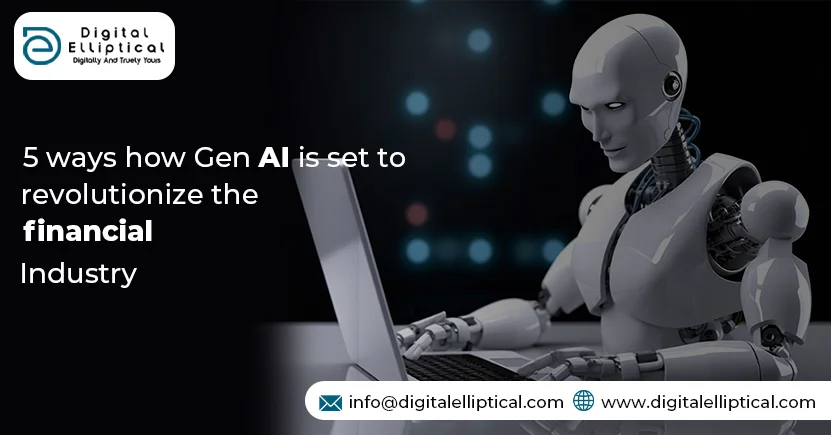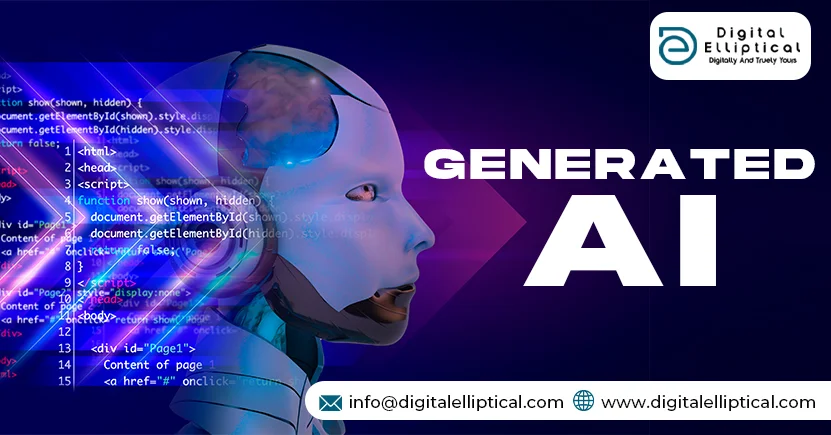5 ways how gen ai is set to revolutionize the financial industry
The financial industry is on the cusp of a transformation, with generative AI leading the charge. Here are five ways this innovative technology is poised to make waves:
1. Enhanced Personalization in Customer Service
Generative AI can create highly personalized experiences for customers by analyzing their past interactions and preferences. This means more tailored financial advice, product recommendations, and customer support that feels uniquely individual.
2. SMARTER FRAUD DETECTION AND PREVENTION
By learning from transaction data, generative AI can identify patterns indicative of fraudulent activity. It can then generate models to predict and prevent future attempts, safeguarding both the financial institutions and their clients.
3. EFFICIENT ALGORITHMIC TRADING
Generative AI can analyze vast datasets to predict market trends and generate trading algorithms. This leads to more efficient and profitable trading strategies that can outperform human traders.
4. AUTOMATED FINANCIAL MANAGEMENT AND ADVISORY
AI can now generate personalized investment portfolios and financial plans for individuals, taking into account their goals, risk tolerance, and financial situations. This automation makes financial advisory accessible to a broader audience.
5. IMPROVED RISK ASSESSMENT AND MANAGEMENT
Generative AI can simulate various economic scenarios and generate risk models that help financial institutions better understand potential risks and devise strategies to mitigate them.
As generative AI continues to evolve, its impact on the financial industry is expected to grow, leading to more innovative solutions and reshaping the way we think about finance.
Generative AI has rapidly acquired appeal, establishing itself as a revolutionary force around the world. Banking is at the vanguard of the industry's significant transition, embracing the promise of Gen AI to rethink established models and modernize banking operations. According to Goldman Sachs, generative AI has the potential to deliver a $7 trillion boost in global GDP and a 150% rise in productivity growth over the next decade. As a result, Generative AI is most likely still the trendiest topic in the corporate world, and it is likely to continue that way.
So, what exactly does Gen AI mean for banks? Banks and financial organizations that use Gen AI early on can better predict consumer expectations, create hyper-personalized user journeys, detect fraud in real time, optimize internal operations, and automate customer care. This wealth of benefits is driving banks and financial institutions to jumpstart their digital transformation journeys and adopt Gen AI into their daily operations.
Let's look at how Gen AI is predicted to transform established banking models.
Creates meaningful, hyper-personalized user journeys to meet customer needs:
For starters, Gen AI collects and analyzes data unlike any other. It enables banks to use data to make insight-driven decisions and recognize changing client patterns and expectations. This enables banks to examine how they might improve their services across several touchpoints to better fulfill the needs of their consumers. This new wave of AI also enables banks to create hyper-personalized user journeys via suggestive marketing and product suggestions based on consumer behavior patterns.
Transforms and automates banking operations for greater productivity:
Generative AI will also make a substantial contribution to how banks run their middle- and back-office processes. Automating repetitive operations such as data entry and transaction processing can effectively reduce costs, increase productivity, and allow banks to focus more on innovation. Tools like ChatGPT and other LLM set the tone here, demonstrating how Gen AI's natural language capabilities for extracting insights from unstructured data can improve banks' client engagement through conversational chatbots and virtual assistants.
Innovation leads to structural changes in job roles and the emergence of new occupations:
It is interesting to note that many Gen AI tools may have an impact on the nature of some existing vocations and occupations by partially automating tasks associated with such roles. AI and innovation will also lead to the creation of new jobs and have far-reaching repercussions for the expansion of human capital in banks. It will necessitate upskilling and reskilling a significant portion of the current workforce, as well as the establishment of new positions and departments.
Gen AI has also helped banks mitigate the danger of fraudulent activity with early threat identification capabilities. Traditional models frequently struggle to keep up with fraud activities that are getting increasingly complicated and sophisticated. Gen AI, on the other hand, uses synthetic data to constantly improve its detection algorithms, allowing banks to identify and avoid suspicious conduct more efficiently.
Despite its enormous promise to transform the finance and banking industries, generative AI faces its own set of obstacles and constraints. There may be ongoing worries regarding responsible AI use and establishing data privacy boundaries. There is a risk of unintended disclosure or misuse of sensitive information, such as personal identification numbers, account balances, and transaction history. Financial institutions must implement appropriate protections to secure client data and preserve trust in their AI systems. Furthermore, the numerical precision of generative AI in banking is something to be wary of. Generative AI models should strive for the maximum accuracy feasible, as wrong but confident answers to concerns about taxes or financial health could result in serious
When used correctly, Gen AI is developing as an unstoppable force, with its importance expanding dramatically across industries such as healthcare, insurance, banking, and many more. Banking leaders must consider Gen AI's position alongside blockchain, Big Data, Web3, open banking, and other disruptive technologies when developing their strategy and objectives. Banks' long-term roadmaps must reflect how these technologies, when applied in the correct combinations, may effectively transform fundamental business activities while also contributing to the global banking industry's growth.



